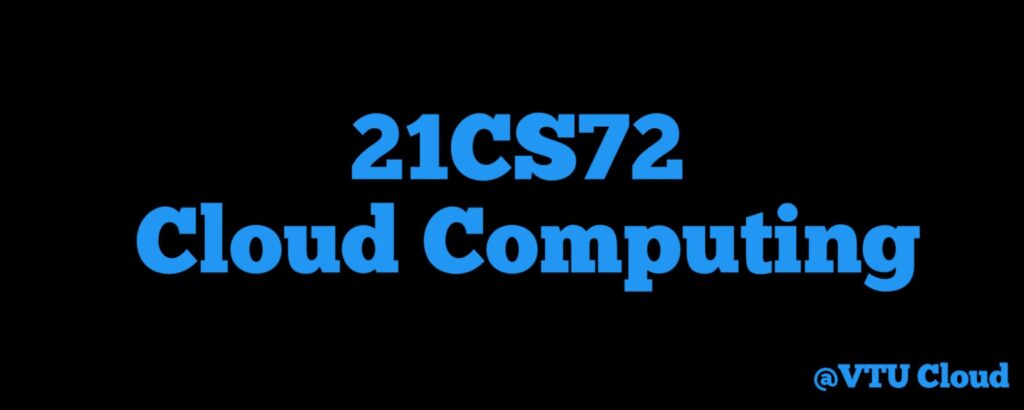21CS72 Cloud Computing

Course Learning Objectives
CLO 1. Introduce the rationale behind the cloud computing revolution and the business drivers
CLO 2. Introduce various models of cloud computing
CLO 3. Introduction on how to design cloud native applications, the necessary tools and the design tradeoffs.
CLO 4. Realize the importance of Cloud Virtualization, Abstraction`s and Enabling Technologies and cloud security
SYLLABUS COPY
MODEL QUESTION AND SOLUTION
IMPORTANT QUESTIONS
MODULE - 1
Introduction Introduction ,Cloud Computing at a Glance, Historical Developments, Building Cloud Computing Environments, Amazon Web Services (AWS), Google AppEngine, Microsoft Azure, Hadoop, Force.com and Salesforce.com, Manjrasoft Aneka
MODULE - 2
Virtualization Introduction, Characteristics of Virtualized, Environments Taxonomy of Virtualization Techniques, Execution Virtualization, Other Types of Virtualization, Virtualization and Cloud Computing, Pros and Cons of Virtualization, Technology Examples
MODULE - 3
Cloud Computing Architecture Introduction, Cloud Reference Model, Types of Clouds, Economics of the Cloud, Open Challenges
MODULE - 4
Cloud Security Risks, Top concern for cloud users, privacy impact assessment, trust, OS security, VM Security, Security Risks posed by shared images and management OS.
MODULE - 5
Cloud Platforms in Industry Amazon web services ompute services, Storage services, Communication services, Additional services. Google AppEngine: – Architecture and core concepts, Application life cycle, Cost model,Observations. Cloud Applications Scientific applications: – HealthCare: ECG analysis in the cloud, Biology: gene expression data analysis
for cancer diagnosis, Geoscience: satellite image processing. Business and consumer applications: CRM and ERP, Social networking, media applications.
Course outcome
At the end of the course the student will be able to:
CO 1. Understand and analyze various cloud computing platforms and service provider.
CO 2. Illustrate various virtualization concepts.
CO 3. Identify the architecture, infrastructure and delivery models of cloud computing.
CO 4. Understand the Security aspects of CLOUD.
CO 5. Define platforms for development of cloud applications
Suggested Learning Resources
Textbooks 1. Rajkumar Buyya, Christian Vecchiola, and Thamrai Selvi Mastering Cloud Computing McGraw Hill Education. 2. Dan C. Marinescu, Cloud Compting Theory and Practice, Morgan Kaufmann, Elsevier 2013 Reference Books 1. Toby Velte, Anthony Velte, Cloud Computing: A Practical Approach, McGraw-Hill Osborne Media. 2. George Reese, Cloud Application Architectures: Building Applications and Infrastructure in the Cloud, O’Reilly Publication. 3. John Rhoton, Cloud Computing Explained: Implementation Handbook for Enterprises, Recursive Press.